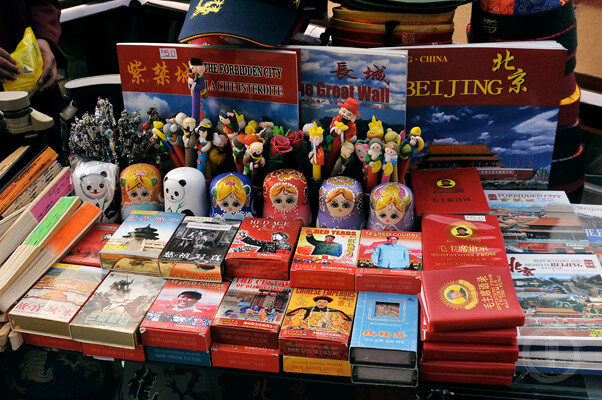The Surge of Cheap Chinese Goods: A New Challenge for Southeast Asia
Across Southeast Asia, factory floors are humming with activity, but beneath the surface, anxiety is mounting. From the furniture workshops of Muar, Malaysia, to the textile mills of Bandung, Indonesia, and the electronics plants of Thailand, local manufacturers are grappling with a surge of cheap Chinese imports. This influx, driven by a combination of global trade tensions, overcapacity in China, and the rise of e-commerce, is reshaping the region’s manufacturing landscape and testing the resilience of its industries.
- The Surge of Cheap Chinese Goods: A New Challenge for Southeast Asia
- How US Tariffs on China Are Reshaping Regional Trade
- China’s Overcapacity and the Drive to Export
- The E-Commerce Revolution: Accelerating the Spread of Chinese Goods
- Sectoral Impacts: From Furniture to Electronics and Textiles
- Policy Responses: Protectionism, Local Content, and Strategic Dilemmas
- China’s Perspective: Mutual Benefit or Market Flooding?
- Opportunities Amid the Challenge: Moving Up the Value Chain
- The Human Cost: Stories from the Factory Floor
- Broader Economic Implications: Inflation, Trade Balances, and Regional Integration
- In Summary
At the heart of this upheaval is a dramatic shift in global trade flows. As the United States and other Western economies erect barriers against Chinese goods—most notably through steep tariffs—Chinese manufacturers are redirecting their exports to new markets. Southeast Asia, with its proximity, growing consumer base, and established trade agreements, has become a primary destination for this redirected wave of products.
How US Tariffs on China Are Reshaping Regional Trade
The latest round of US tariffs on Chinese goods, initiated under the Trump administration and maintained by President Biden, has had far-reaching consequences. With tariffs on Chinese imports reaching as high as 145%, direct exports from China to the US have plummeted. In response, Chinese exporters have sought alternative markets, and Southeast Asia has emerged as a key outlet.
According to Citigroup and Bloomberg, countries like Vietnam, Thailand, and Indonesia have seen a sharp surge in Chinese imports. In Indonesia, for example, textile imports from China recently hit a new monthly high, exacerbating challenges for a garment sector already struggling with layoffs and factory closures. The price of Chinese textile shipments has been falling since early 2023, intensifying competition for local producers.
This phenomenon is not limited to textiles. Electronics, furniture, steel, and even electric vehicles (EVs) are among the sectors feeling the pressure. The record shipments to Southeast Asia are also raising concerns about transshipment—where Chinese goods are routed through third countries to avoid US tariffs. This has become a focal point in trade negotiations, with the US urging Southeast Asian nations to tighten rules on certificates of origin.
China’s Overcapacity and the Drive to Export
The root of the current wave of cheap Chinese goods lies in China’s domestic economic challenges. A post-pandemic malaise, a real estate slump, and weak consumer demand have left Chinese factories with excess capacity. To keep production lines running and workers employed, manufacturers have doubled down on exports, often accepting razor-thin profit margins or even losses.
China’s trade surplus in manufactured goods soared from around US$1 trillion in 2018 to more than US$1.8 trillion in 2023. With access to Western markets restricted, Southeast Asia has become China’s largest export market, surpassing both the US and the European Union. In 2023, Chinese exports to ASEAN rose by 12%, while ASEAN exports to China grew by just 2%, widening trade deficits and increasing strain on local industries.
Much of the Chinese export surge consists of capital and intermediate goods—machinery, components, and raw materials used in further production. However, a significant portion is also made up of consumer goods, from clothing and shoes to electronics and furniture, sold at prices local producers struggle to match.
The E-Commerce Revolution: Accelerating the Spread of Chinese Goods
The rise of e-commerce platforms has turbocharged the flow of Chinese products into Southeast Asia. Platforms like Shopee, Lazada, Temu, and TikTok Shop have made it easier than ever for Chinese manufacturers to reach consumers directly, bypassing traditional retail channels and local distributors.
In Indonesia, the launch of TikTok Shop in 2021 was followed by a wave of layoffs in the textile, garment, and footwear sectors. Factories in provinces like Banten, West Java, and Central Java have closed, with tens of thousands of workers losing their jobs. Managers cite the flood of cheap Chinese goods sold online as a key factor in declining sales and revenue.
Malaysia and Thailand have also seen a surge in online purchases of low-cost Chinese products. In response, both countries have introduced new taxes on imported goods bought online, aiming to level the playing field for local businesses. However, industry leaders say these measures have had limited impact so far, as online vendors find ways to circumvent regulations.
Sectoral Impacts: From Furniture to Electronics and Textiles
The impact of cheap Chinese imports is being felt across a range of industries:
- Furniture: In Muar, Malaysia’s furniture capital, export volumes have dropped significantly. Local manufacturers like Natural Signature have been forced to slash prices and profit margins to compete with Chinese rivals, who benefit from government support, tax rebates, and highly efficient supply chains. Some Chinese companies have even relocated production to Vietnam, taking advantage of lower labor and raw material costs.
- Textiles: Indonesia’s textile sector has been particularly hard hit. Major companies like Sritex have entered bankruptcy, citing oversupply from China as a key factor. The Indonesian Textile Association reports that much of the Chinese textiles flooding the market are imported illicitly, avoiding taxes and undercutting local producers by 20-30%.
- Electronics: Thailand’s electronics and household appliance sectors are facing intensified competition. Chinese brands like Midea and TCL have ramped up marketing and price promotions, while local SMEs struggle to survive. The influx of cheap Chinese air conditioners, fans, and other appliances has led to factory closures and job losses.
- Automotive and EVs: The arrival of Chinese electric vehicles has disrupted Thailand’s auto industry, traditionally dominated by Japanese manufacturers. Local auto parts suppliers have seen orders drop, and the government has introduced local content requirements to support domestic production.
Policy Responses: Protectionism, Local Content, and Strategic Dilemmas
Governments across Southeast Asia are under pressure to protect local industries and jobs. Policy responses have included:
- Tariffs and Taxes: Indonesia is considering duties of up to 200% on imported fabrics and other goods. Malaysia and Thailand have imposed new sales taxes and value-added taxes on low-value online imports.
- Local Content Requirements: Thailand now requires EV manufacturers to use at least 40% local components, with some Chinese companies pledging to increase local sourcing to meet these rules.
- Anti-Dumping Measures: Vietnam and Indonesia have imposed anti-dumping tariffs on certain Chinese products, and Thailand is monitoring imports more closely.
However, these measures come with trade-offs. Many Chinese imports are capital and intermediate goods essential for local production and exports. Raising barriers could make domestic firms less competitive globally. Moreover, Southeast Asian governments are keen to attract Chinese investment in high-tech sectors, such as EVs and renewable energy, complicating efforts to restrict imports.
China’s Perspective: Mutual Benefit or Market Flooding?
China has pushed back against accusations of market flooding, arguing that most of its exports to Southeast Asia are capital and intermediate goods that support local production and value addition. The Chinese Embassy in Thailand, for example, described trade as “mutually beneficial and win-win,” noting that consumer goods account for less than 10% of the total value of Chinese imports into Thailand.
Nevertheless, local industry groups and economists warn that the sheer volume and low prices of Chinese goods are overwhelming small and medium-sized enterprises (SMEs), leading to factory closures and job losses. The Federation of Thailand Industry has warned of a “tsunami” of cheap imports, and similar concerns are echoed in Malaysia and Indonesia.
Opportunities Amid the Challenge: Moving Up the Value Chain
Despite the challenges, some see opportunities for Southeast Asia to reposition itself in the global economy. As Chinese manufacturers move up the value chain and invest in the region, there is potential for technology transfer, job creation, and industrial upgrading—if managed strategically.
Experts argue that Southeast Asian countries should focus on:
- Upgrading Skills and Technology: Investing in workforce training and industrial innovation to compete in higher-value segments.
- Strengthening Local Supply Chains: Encouraging deeper linkages between foreign investors and domestic suppliers, particularly through local content requirements.
- Diversifying Export Markets: Reducing reliance on any single market by expanding exports to the US, Europe, and other regions.
- Leveraging Trade Agreements: Using frameworks like the Regional Comprehensive Economic Partnership (RCEP) and the ASEAN-China Free Trade Agreement to pursue long-term strategic interests.
Rebecca Sta Maria, former executive director of the Asia-Pacific Economic Cooperation Secretariat, emphasizes the importance of value addition:
“What is the value-add of these investments? It has to be part and parcel of the industrial policy and the investment policy. Otherwise this will come back to haunt us.”
The Human Cost: Stories from the Factory Floor
Behind the statistics are real people whose livelihoods are at stake. In Indonesia, workers like Kurniadi Eka Mulyana have lost jobs as textile factories close. In Malaysia, furniture makers like Candice Lim are fighting to keep their businesses afloat, slashing prices and seeking new markets. In Thailand, small appliance manufacturers are struggling to survive as Chinese brands dominate the market.
Some entrepreneurs are adapting by moving into niche markets, focusing on quality, customization, or sustainability. For example, Malaysia is shifting towards certified sustainable timber products to appeal to international buyers. In Indonesia, new garment businesses are emerging in rural areas, leveraging social media platforms to reach customers and diversify export destinations.
Broader Economic Implications: Inflation, Trade Balances, and Regional Integration
The influx of cheap Chinese goods has complex macroeconomic effects. On one hand, it helps keep consumer prices low, offering relief to inflation-worn economies. On the other, it widens trade deficits, undermines local industries, and can lead to job losses and social unrest.
Economists note that while the region’s trade deficit with China has ballooned, ASEAN’s overall trade surplus with the rest of the world remains strong. Moreover, the growth of services trade—tourism, digital services, logistics—offers new avenues for economic expansion.
There is also a risk of escalating protectionism, as countries respond to import surges with tariffs and non-tariff measures. Experts caution that such measures can backfire, making local firms less competitive and hindering regional integration. Instead, they advocate for a balanced approach that leverages trade agreements, encourages investment, and supports industrial upgrading.
In Summary
- Southeast Asia is experiencing a surge of cheap Chinese imports, driven by US tariffs, Chinese overcapacity, and the rise of e-commerce.
- Local industries in furniture, textiles, electronics, and automotive sectors are under intense pressure, with factory closures and job losses reported across the region.
- Governments are responding with tariffs, taxes, local content requirements, and anti-dumping measures, but these come with trade-offs and limited effectiveness.
- China argues that most exports are capital and intermediate goods that support local production, but local SMEs are struggling to compete on price and scale.
- Opportunities exist for Southeast Asia to move up the value chain, attract high-tech investment, and strengthen regional integration, but this requires strategic policy and investment in skills and innovation.
- The human cost is significant, with workers and entrepreneurs adapting to a rapidly changing landscape.
- Balancing the benefits of cheap imports with the need to protect local industries and jobs is a central challenge for Southeast Asia as it navigates the new era of global trade.












